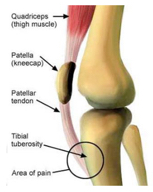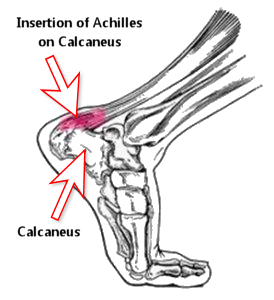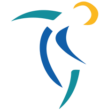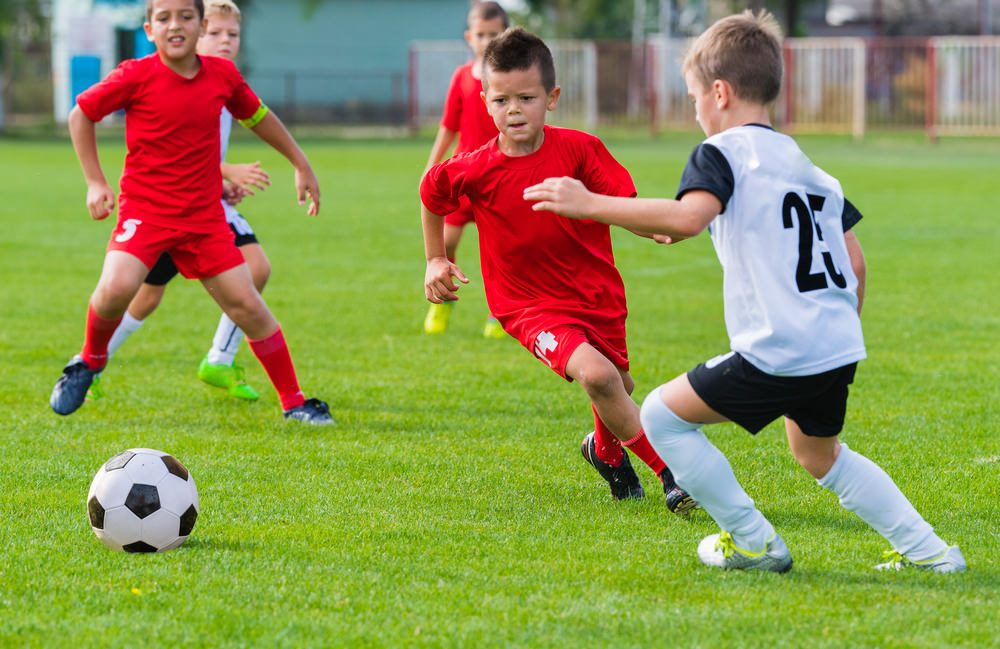Injuries Affecting our Kids
It is thought that 30-50% of children’s sporting injuries are due to overuse. This happens with children because their skeleton is immature. They have cartilaginous growth centres that are vulnerable to injury. In adults, these centres calcify once growing has stopped and become bone. These cartilaginous growth centres are found at the end of long bones where tendons attach to the bone. During a growth spurt the bones grow quickly, thereby tightening the tendon-muscle unit which increases the traction forces at the insertion site. If you add an increase in physical activity to this process it can lead to injury.
Risk factors that may lead to overuse injuries may include a sudden increase in intensity, duration or frequency of activity. It is common for us to see these injuries in the beginning of the year after the Christmas break when there has been a rest from formal sporting activities. When school resumes so do sports with training and playing sessions.
Sporting camps or tournaments may also lead to injuries as they usually involve long periods of high intensity activities with fewer rest periods. Other risk factors include children who only participate in one sport. The same muscles are repeatedly doing the same actions. This may lead to an overdevelopment of one set of muscles with a concurrent underdevelopment of opposing muscles. Participating in different activities is a good idea for kids.
Did You Know
The top five sporting activities that Aussie kids participate in are:
- Swimming
- Soccer
- Cycling
- Athletics
- Basketball
 Osgood-Schlatter disease (OSD)
Osgood-Schlatter disease (OSD)
Isn’t that a great name! This would be the most common injury in children that we see. It is thought that 20% of sporting kids will develop this, affecting girls between 8 and 13 years and boys between 10 and 15 years.
This happens when the pulling force of the thigh muscles pulls on the patella (kneecap) tendon which pulls on the tibial tubercle (bony bump on the shin bone near the near). The repetitive pulling force can lead to swelling and pain around the tibial tubercle. Common sports that may lead to this include running, twisting and jumping- basketball, footy and gymnastics.
Treatment options may include:
- Icing of the area.
- Modifying the training regime, including rest periods. It does not mean sport needs to stop.
- Taping.
- Stretching certain muscles and strengthening others to establish a more balanced effect
 Sever’s disease
Sever’s disease
Sever’s disease (also called calcaneal apophysitis) is a common cause of heel pain in children who play sport. It is common in girls between 8 and 10 years and boys between 10 and 12 years. Again, it happens during a growth spurt and an increase in physical activity. This time it happens because the calf muscles pull on the Achilles tendon which pulls on its insertion site at the back of the heel. Repetition of this
can lead to pain and swelling on the back of the heel. Running and jumping activities are most at risk. Other contributing factors include, tight calf muscles, stiff ankle joints (this may happen after an ankle injury) and poor foot biomechanics. It is thought that kids with pronated or flat feet may lead to an increase in pressure placed along the Achilles tendon making the insertion site more vulnerable to repetitive injury. Treatment is similar to OSD but may also include working on foot biomechanics.
Hips, Pelvis and Elbows
Other areas that may be affected by similar mechanisms include hips, pelvis and elbows. These are much less common and tend to occur in older children between 14 and 18 years of age.
With the hips and pelvis, pain is felt wherever muscles attach along the femur (thigh bone) and pelvis. A thorough assessment is required when children complain of pain in these areas to determine that it is coming from an overuse injury as opposed to other causes.
When elbow pain is felt it is usually on the inside of the elbow. This is common with throwing sports such as baseball pitching. As baseball is not a popular sport in Australia we don’t tend to see much of this here.
Click here for some common stretches that address the main muscle groups in the legs. If a child is feeling significant pain, these stretches should not be done to begin with. Here at Whittens Physiotherapy Centre, we find using a foam roller initially, is a gentler way to stretch muscles without putting too much pressure on the insertion sites.
Prevention
Education about these injuries is important for parents, coaches and children to help with prevention and management. Warming up before playing sport increases circulation to the muscles making them more pliable and therefore less prone to injury. It also may lead to a reduction in tensile forces across the tendon and onto the insertion sites.
The progression of training is very important. It is thought that intensity or duration should be increased one at a time. When increasing either one no more than a 10% increase per week is recommended.
Also adequate rest is required between activity sessions. This allows for muscles and tendons to recover and to adapt. The amount of rest required will be dependent on the individual and their circumstances. If a child is showing a significant growth period they may require longer periods of rest.
Looking at equipment such as running shoes, footy/soccer boots, possible orthotics may also be necessary.

